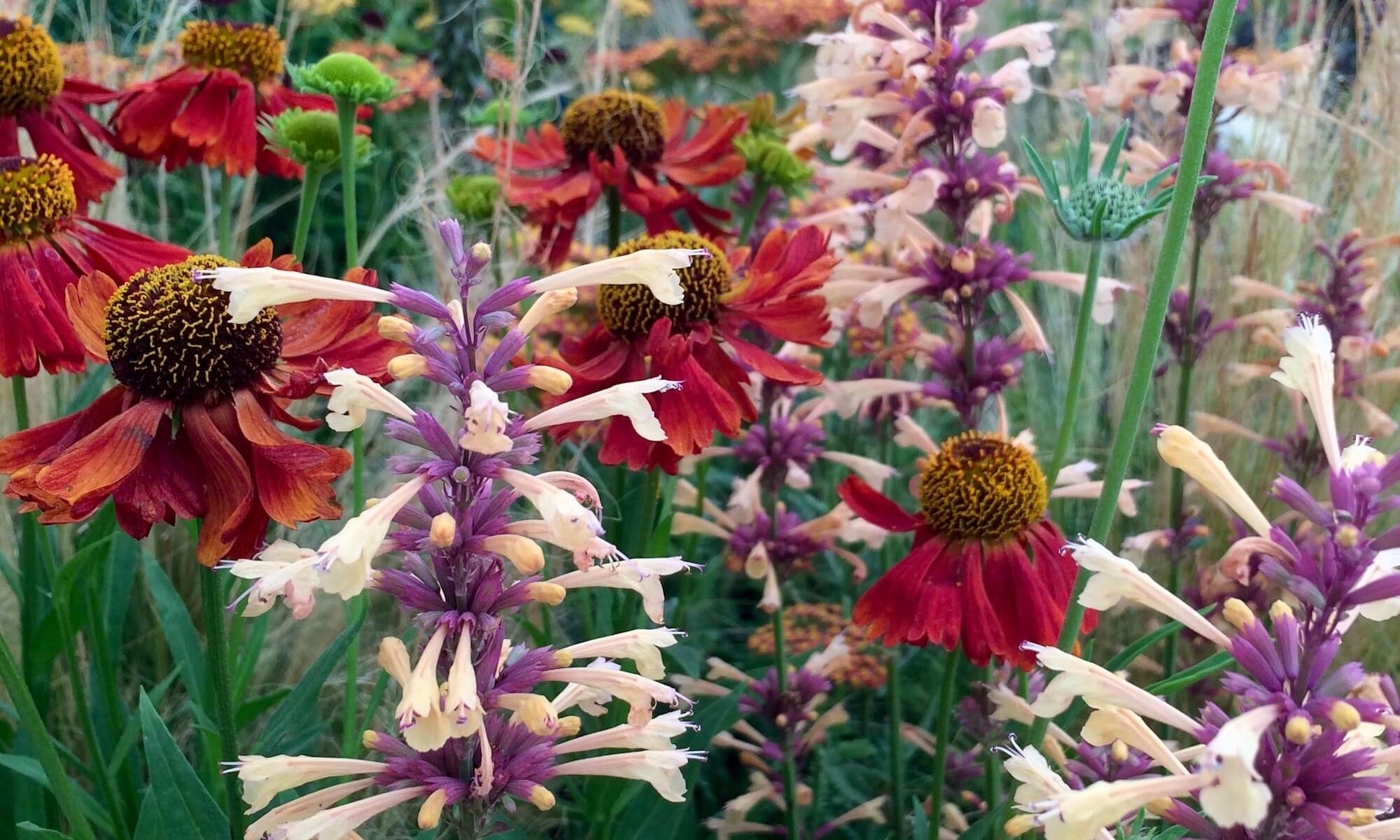
The Chelsea Plant of the Year (from 2021) is a deciduous, multi-stemmed redbud tree that keeps fairly compact at under 4 m / 13 ft. It’s something of a curiosity.
Confounding our expectations, Cercis canadensis ‘Eternal Flame’ has what we think of as autumn foliage during the whole of the time it is in leaf. The glossy, heart-shaped leaves open deep, fiery red, then turn orange, lime green and yellow, giving a burning bush effect when backlit.
The plant shown here is a young, slender sapling offered for sale at the Tatton Park Flower Show with quite a hefty price tag. Mature trees bear masses of pink pea-style flowers that sprout out directly from the stems before the leaves appear.

Lovely reds and oranges.
Stunning. Beautiful plant, and the way it’s photographed is especially magical.
Their shade is really amazing under the sunlight 🙂
Best part. Here in the US, C. canadensis has a wide range where it’ll grow. Should do well anywhere in the UK. great tree!
Goes by the name “Redbud” here in Texas, and the southern US. Blooms very early here, usually in March, and is a real show-stopper. You’ve captured lovely light through the leaves.
Oooh — there’s a lovely tendril-type bangle rounding the side — is that the pea-style flower? What a frisky play of shadow and colors! This must be the centerpiece wherever it’s planted.
No, that’s ‘just’ a tendril. Redbud flowers are close to the stems before the flowers. I’m sure you’ll have seen them. They’re pink, not red, so the name always puzzles me.
I first saw a red bud tree in a Singapore post; I thought to myself how exotic it was. The I went for a walk and there was a red bud tree in full bloom only a block away. Then I learned its name Cercis canadensis and realized that it wasn’t exotic at all – just plain old Canadian like me! They are very lovely and if I get a couple of small trees for my deck that will probably be one of them…
Cercis canadensis happens to be the state tree of Oklahoma (and perhaps other states.) There’s also a native version here, known as C. canadensis var. texensis. It differs from Eastern redbud slightly, with leaves are rounder, thicker, and very glossy. It’s also more drought and heat tolerant than Eastern Redbud, and quite a sight when it’s seen blooming in the midst of Hill Country woods. That said, I’d be willing to plant this cultivar if I had a place for it. The combination of colors is beautiful, and one I rarely see here except with the invasive Chinese Tallow — and poison ivy!
That is the most beautiful photo, Susan! Happy weekend!
Beautifully lit